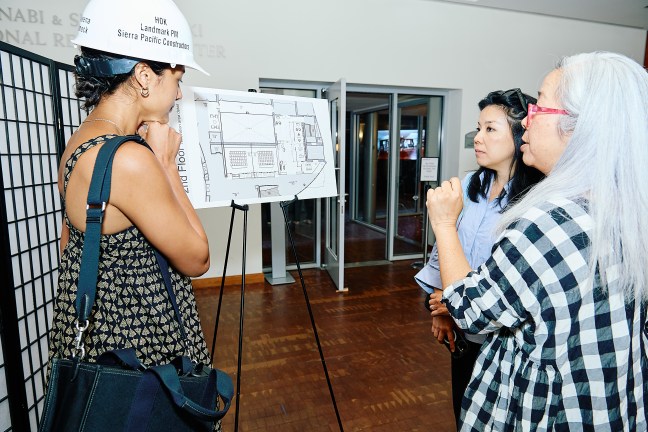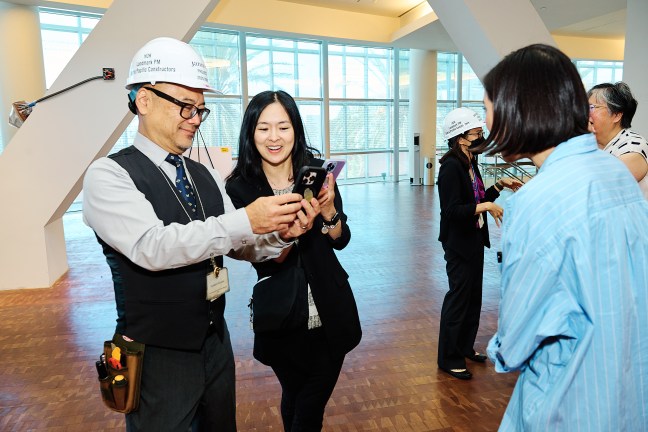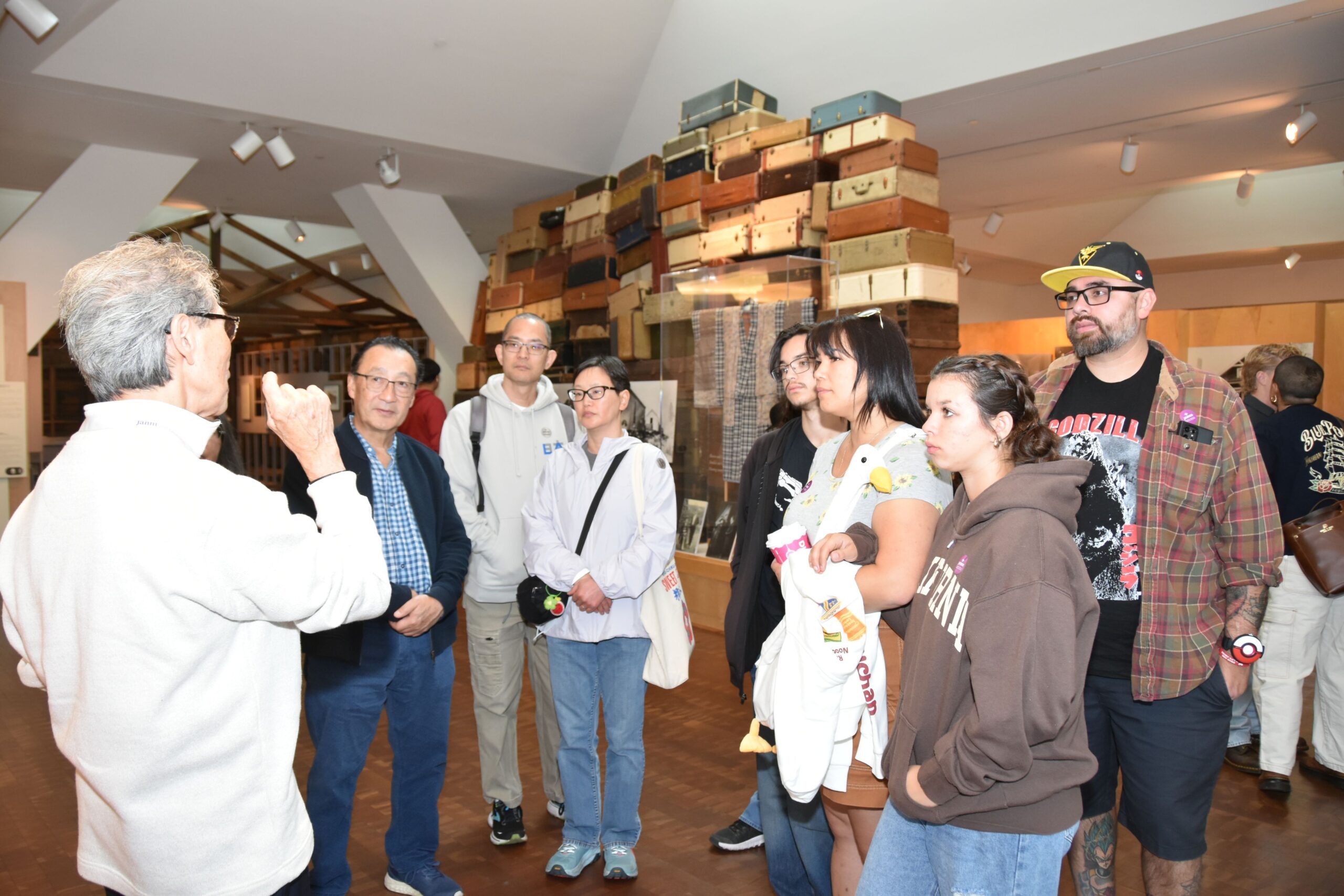During the summer, JANM launched the start of a new chapter with its Pavilion groundbreaking ceremony that featured renovation plans for the Museum’s public galleries and self-guided tours of the new core exhibition, In the Future We Call Now: Realities of Racism, Dreams of Democracy, education space, and the Manabi and Sumi Hirasaki National Resource Center (HNRC).
“This is an epoch-defining moment for us. It feels as though we are now about to enter the next phase of where JANM is going to go in the future and I know that all of you will be with us every single step of the way,” said JANM President and CEO, Ann Burroughs.
The future looks bright for the new core exhibition which will be housed on the first floor. In the Future We Call Now will draw on the Museum’s extensive collection of 160,000 artifacts, new technology, and the national discussion around race and democracy to tell sweeping and complex stories of Japanese Americans from mid-1800s immigration through today. The exhibition’s title is taken from traci kato-kiriyama’s latest book, Navigating With(out) Instruments, and mirrors the urgency and universality of the Japanese American story.

“This project will enhance our ability to pursue JANM’s mission and to use our voice to promote understanding and appreciation of America’s ethnic and cultural diversity by sharing the journey, struggles, and successes of the Japanese American community,” said William T Fujioka, the chair of JANM’s Board of Trustees.
Artifacts like the Heart Mountain barracks, Manzanar concentration camp model, military medals and a uniform, and more that were highlighted in JANM’s inaugural core exhibition, Common Ground: The Heart of Community, will be featured alongside new artifacts and images in In the Future We Call Now. The new core exhibition will also feature eight new videos from JANM’s Frank H. Watase Media Arts Center including remastered prewar home movies and World War II camp home movies; redress hearings from Los Angeles, New York City, Chicago, and Seattle; and video of community events from the contemporary, national Japanese American community. JANM will also release an online exhibition for In the Future We Call Now that will supplement the exhibition for both in-person and virtual visitors.



Yonsei and Vice President of NakatomiPR, Amy Watanabe, discussed her earliest memory of visiting JANM with her grandmother when the Museum was in the Historic Building. When they walked through the barracks and passed by the stack of suitcases in Common Ground, her grandmother would talk about packing all of her belongings in a suitcase that now sits in Watanabe’s living room. She also talked about seeing the remastered home movies in JANM’s collection that were shot by her grandfather before and during the war.
“I saw a glimpse of my Watanabe family’s life in Long Beach before the war as Japanese American store owners with their Black and White neighbors and customers living out the American Dream. And then scenes of life with everything stripped away at camp, everyday moments captured quietly and courageously.”
While the Pavilion’s first floor will be dedicated to the new core exhibition, its second floor will be the home for JANM’s educational programs and the HNRC. The classroom space will be flexible and able to accommodate two classrooms for forty-five guests or one classroom for ninety guests.
“I think it’ll be a great opportunity for students to digest what they have seen in our exhibition and be able to come together and think about things like present-day relevancy, and to have conversations not only with us but with each other to think about things they’ve seen. So we’re really excited to have the space to have those important conversations,” said JANM’s Director of Education, Lynn Yamasaki.

The HNRC will feature open space and a reading room for researchers and visitors to explore the Museum’s rich resources. Virtual reality oral histories like The Interactive StoryFile of Lawson Iichiro Sakai will also be available for visitors to have conversations with camp survivors and learn about their legacies. The second-floor galleries will remain available for JANM’s traveling exhibitions. As JANM renovates its public galleries, the Museum will continue to use the lessons of Japanese American history to defend contemporary threats to democracy, protect civil rights, and demand accountability in the face of injustice.
“This renovation is an opportunity to have more chances to say never again, and we mean it. Our democracy is us. We bear responsibility for it to be meaningful. That’s our lesson and our assignment that we take with us as we renovate this building,” said George Takei, beloved actor, author, and the chair emeritus of JANM’s Board of Trustees.
How It Started and How It’s Going
Slide the arrows to the left or right to see a couple in-progress photographs of the galleries and click on the button below to take the 360° tour!




Featured Image: JANM leadership breaking ground on the Pavilion’s public galleries. Photo by Mike Palma.
Photo collage: The Heart Mountain barrack in temporary storage. Photos by Mike Palma.

















































